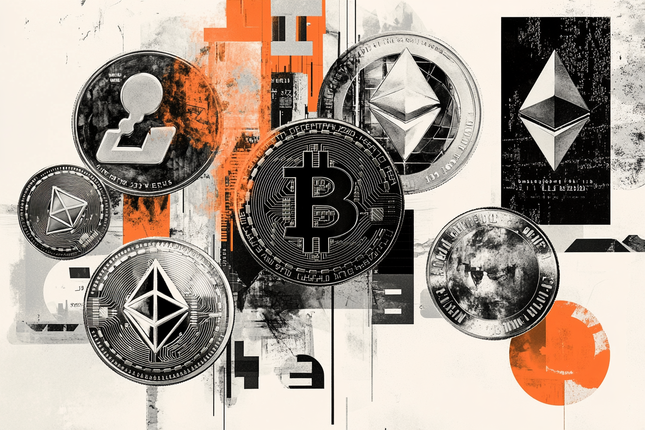- Indian Rupee edges lower on Monday on the firmer USD.
- The optimistic Indian economic outlook and the continuous foreign inflows might cap the downside of the Indian Rupee.
- The US Fed interest rate decision on Wednesday will be in the spotlight.
Indian Rupee (INR) loses ground on Monday amid the modest recovery of US Dollar (USD). The downside of the INR might be limited due to the positive economic outlook in the Indian economy and the continuous foreign inflows into government bonds. Foreign portfolio investors increased their holdings of Indian government bonds by roughly 50% since the index inclusion news less than six months ago. Nonetheless, the risk-averse environment, higher crude oil prices, and higher US Treasury bond yields might weigh the INR and create a tailwind for the USD/INR pair.
Investors will closely monitor the Fed interest rate decision on Wednesday, which is widely expected to keep rates steady at its March meeting. Market players will also take cues from Fed Chairman Jerome Powell's remarks during the press conference, as it might offer some hints about the future trajectory of US interest rates. On Thursday, India’s S&P Global Manufacturing and Services PMI will be due.
Daily Digest Market Movers: Indian Rupee remains sensitive amid multiple challenges
- The Indian merchandise trade deficit widened to $18.7 billion in February from $16.57 billion in January as gold imports surged significantly amid the Red Sea geopolitical tensions.
- Goods imports rose to $60.11 billion in February versus $54.41 billion in January, while exports arrived at $41.40 billion in February from $36.92 billion in January, according to the commerce ministry.
- The University of Michigan Consumer Sentiment Index eased to 76.5 in March compared to expectations and the previous reading of 76.9.
- The preliminary UoM one-year and five-year inflation expectations for March were unchanged at 3.0% and 2.9%, respectively.
- US Industrial Production improved to 0.1% MoM in February from a downwardly revised -0.5% MoM in January.
Technical Analysis: Indian Rupee remains capped within a longer-term range between 82.60 and 83.15
Indian Rupee trades softer on the day. USD/INR continues its rangebound movement within a multi-month-old descending trend channel around 82.60–83.15 since December 8, 2023.
Technically, USD/INR maintains a bearish outlook in the near term as the pair holds below the key 100-day Exponential Moving Average (EMA) on the daily timeframe. The 14-day Relative Strength Index (RSI) lies below the 50.0 midline, emphasizing the downward momentum and hinting that sellers have the upper hand.
The potential support level for USD/INR is seen near the lower limit of the descending trend channel at 82.60. A breach of this level will expose 82.45 (low of August 23), en route to 82.25 (low of June 1). On the upside, the immediate resistance level is located near the 100-day EMA and a psychological mark at 83.00. A break above the mentioned level might resume its rally to the upper boundary of the descending trend channel near 83.15. The next hurdle to watch is 83.35 (high of January 2), followed by the 84.00 round figure.
US Dollar price today
The table below shows the percentage change of US Dollar (USD) against listed major currencies today. US Dollar was the strongest against the Japanese Yen.
| USD | EUR | GBP | CAD | AUD | JPY | NZD | CHF | |
| USD | -0.07% | -0.03% | -0.08% | -0.10% | 0.15% | -0.09% | 0.04% | |
| EUR | 0.07% | 0.03% | -0.01% | -0.03% | 0.22% | -0.02% | 0.09% | |
| GBP | 0.03% | -0.03% | -0.05% | -0.08% | 0.18% | -0.07% | 0.03% | |
| CAD | 0.09% | 0.00% | 0.05% | -0.03% | 0.23% | -0.02% | 0.08% | |
| AUD | 0.11% | 0.05% | 0.08% | 0.04% | 0.26% | 0.02% | 0.14% | |
| JPY | -0.14% | -0.22% | -0.11% | -0.21% | -0.26% | -0.24% | -0.15% | |
| NZD | 0.09% | 0.04% | 0.06% | 0.01% | -0.02% | 0.24% | 0.09% | |
| CHF | -0.01% | -0.08% | -0.04% | -0.08% | -0.11% | 0.14% | -0.10% |
The heat map shows percentage changes of major currencies against each other. The base currency is picked from the left column, while the quote currency is picked from the top row. For example, if you pick the Euro from the left column and move along the horizontal line to the Japanese Yen, the percentage change displayed in the box will represent EUR (base)/JPY (quote).
Indian Rupee FAQs
The Indian Rupee (INR) is one of the most sensitive currencies to external factors. The price of Crude Oil (the country is highly dependent on imported Oil), the value of the US Dollar – most trade is conducted in USD – and the level of foreign investment, are all influential. Direct intervention by the Reserve Bank of India (RBI) in FX markets to keep the exchange rate stable, as well as the level of interest rates set by the RBI, are further major influencing factors on the Rupee.
The Reserve Bank of India (RBI) actively intervenes in forex markets to maintain a stable exchange rate, to help facilitate trade. In addition, the RBI tries to maintain the inflation rate at its 4% target by adjusting interest rates. Higher interest rates usually strengthen the Rupee. This is due to the role of the ‘carry trade’ in which investors borrow in countries with lower interest rates so as to place their money in countries’ offering relatively higher interest rates and profit from the difference.
Macroeconomic factors that influence the value of the Rupee include inflation, interest rates, the economic growth rate (GDP), the balance of trade, and inflows from foreign investment. A higher growth rate can lead to more overseas investment, pushing up demand for the Rupee. A less negative balance of trade will eventually lead to a stronger Rupee. Higher interest rates, especially real rates (interest rates less inflation) are also positive for the Rupee. A risk-on environment can lead to greater inflows of Foreign Direct and Indirect Investment (FDI and FII), which also benefit the Rupee.
Higher inflation, particularly, if it is comparatively higher than India’s peers, is generally negative for the currency as it reflects devaluation through oversupply. Inflation also increases the cost of exports, leading to more Rupees being sold to purchase foreign imports, which is Rupee-negative. At the same time, higher inflation usually leads to the Reserve Bank of India (RBI) raising interest rates and this can be positive for the Rupee, due to increased demand from international investors. The opposite effect is true of lower inflation.
Information on these pages contains forward-looking statements that involve risks and uncertainties. Markets and instruments profiled on this page are for informational purposes only and should not in any way come across as a recommendation to buy or sell in these assets. You should do your own thorough research before making any investment decisions. FXStreet does not in any way guarantee that this information is free from mistakes, errors, or material misstatements. It also does not guarantee that this information is of a timely nature. Investing in Open Markets involves a great deal of risk, including the loss of all or a portion of your investment, as well as emotional distress. All risks, losses and costs associated with investing, including total loss of principal, are your responsibility. The views and opinions expressed in this article are those of the authors and do not necessarily reflect the official policy or position of FXStreet nor its advertisers. The author will not be held responsible for information that is found at the end of links posted on this page.
If not otherwise explicitly mentioned in the body of the article, at the time of writing, the author has no position in any stock mentioned in this article and no business relationship with any company mentioned. The author has not received compensation for writing this article, other than from FXStreet.
FXStreet and the author do not provide personalized recommendations. The author makes no representations as to the accuracy, completeness, or suitability of this information. FXStreet and the author will not be liable for any errors, omissions or any losses, injuries or damages arising from this information and its display or use. Errors and omissions excepted.
The author and FXStreet are not registered investment advisors and nothing in this article is intended to be investment advice.
Recommended content
Editors’ Picks

EUR/USD extends the rally toward 1.1000 on sustained US Dollar weakness
EUR/USD extends the advance toward 1.1000 in the European session on Wednesday. The US Dollar continues to weaken across the board as US President Trump's reciprocal tariffs kicked in and aggravated economic concerns. Traders keep a close eye on trade talks and Fed Minutes for fresh cues.

GBP/USD holds firm near 1.2850 amid softer US Dollar
GBP/USD holds gains near 1.2850 in European trading on Wednesday. The pair’s uptick is supported by a sustained US Dollar weakness as investors remain wary over the impact of the escalating global trade war on the US economic prospects. Tariff updates and Fed Minutes are next in focus.

Gold price builds on strong intraday gains; bulls retain control near $3,050 area amid risk-off mood
Gold price climbs back closer to the $3,050 area during the early European session on Thursday as worries that an all-out global trade war would push the world economy into recession continue to boost safe-haven demand.

Bitcoin, Ethereum and Ripple target $73,000 BTC, $1,300 ETH, and $1.30 XRP
Bitcoin price hovers around $76,200 on Wednesday after falling 3.59% the previous day. Ethereum and Ripple followed BTC’s footsteps and continued their downward trend.

The Fed is looking at a hefty price level
We are still in thrall to tariffs, the faux-macro “data” driving markets. The WSJ editorial board advised other countries to take their tariffs to zero so that Trump’s “reciprocal” tariffs will have to be zero, too. Cute, but no cigar.

The Best brokers to trade EUR/USD
SPONSORED Discover the top brokers for trading EUR/USD in 2025. Our list features brokers with competitive spreads, fast execution, and powerful platforms. Whether you're a beginner or an expert, find the right partner to navigate the dynamic Forex market.



